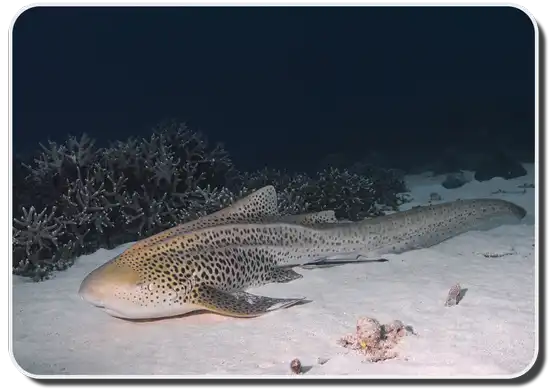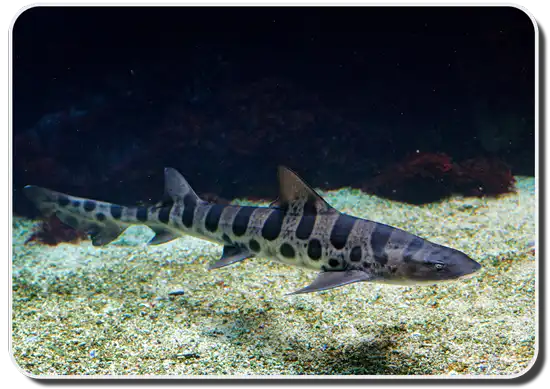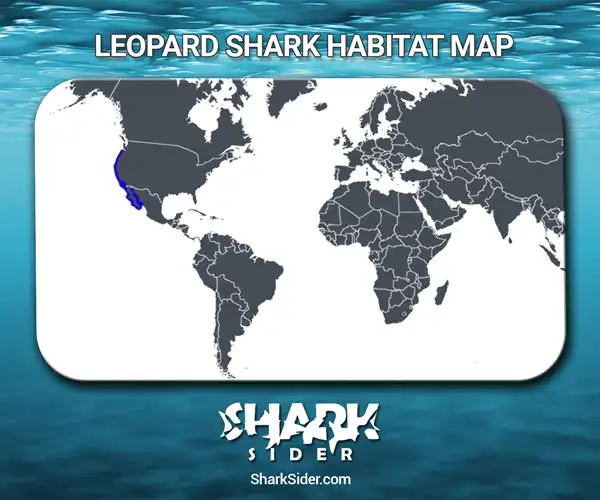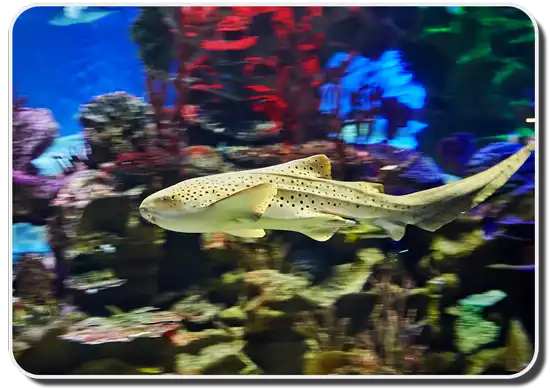The Leopard Shark is small and pretty much harmless to humans. It can be spooked easily so many divers and snorkelers have a tough time catching a glimpse before they swim off. But luckily, we have learned quite a bit about this amazing fish!

Physical Attributes and Reproduction Process
Known for its distinctive dark spots and saddle type markings, the Leopard Shark (Triakis semifasciata) is known to live up to 30 years, taking more than a decade to reach maturity. They generally only grow to about 4 or 5 feet (in rare occasions they can reach 6ft) and the heaviest ever recorded weighed in at 40lbs. As a member of the Houndsharks family, some of the Leopard Shark’s distinctive features include having a round snout that is short, and first dorsal fin that is fairly large and is placed over the pectoral fin. Its second dorsal fin is almost the same size as the first one, its anal fin is the smallest of the three and it has a broad triangular pectoral fin.
Reproduction and Offspring
As an Ovoviviparous animal, the eggs produced by the female are maintained in a brood chamber; since there is a yolk sac, the embryo is able to develop and literally hatch within the mother’s uterus. The pups are born after this aplacental process and the shark’s litter may contain 4 to 29 pups. Pups frequent shallow waters as seen in the photo. Note its size in relation to the sandals!
Quick Informational Video On The Leopard Shark
Diet
Their diet consists of invertebrates that primarily feed on the bottom of the ocean including: crabs, shrimp, clams, octopus, bony fish (i.e. anchovies, herring), cartilaginous fish, guitarfish, bat rays, herring, topsmelt, jacksmelt, and midshipmen. When dissected, their stomachs have also been known to contain small sharks. Theirs is a diet that changes based on the season and their size.
Surface Hunting
They’ve also been spotted in the San Francisco Bay with Piked Dogfish doing some fishing of their own. The Piked Dogfish and the Leopard Shark swim at the surface keeping their mouths open wide, and going in a counter-clockwise motion. Simultaneously, schools of anchovies that are also at the surface of the water swim in a clockwise direction. The sharks do appear to be hunting the anchovies, but their movements calmly enable the ingestion of the unknowing prey. In this case it would be the anchovies that unintentionally swim directly into the open mouths of the exceptionally sly sharks.

Habitat
Map Of The Leopard Shark’s Habitat

These sharks are found in continental littoral waters, inshore and offshore, and their preference is for waters that are cool to warm in temperate, and sandy or muddy bays. They love sand flats, mud flats, and rocky bottom areas near reef sites and kelp beds. These sharks are regularly found near the bottom of shallow waters, and they are without doubt exceptionally strong swimmers. Oftentimes, they are joined in a school of others that include the Smooth-Hound (Mustelus henlei), gray Smooth-Hound (Mustelus californicus) or the Piked Dogfish, (Squalus acanthias). If you’d like to know more of an exact location to find these beautiful creatures, they are most likely to be swimming on the Eastern North Pacific from Oregon to the Gulf of California and Mexico.
Human Interaction
Leopard Sharks are harmless to humans. Unfortunately however, in 1955 one did attack a diver in Trinidad Bay, California. The diver was not seriously injured. Considering the fact that this attack was a very long time ago, there are not many other recorded attacks, and most importantly, the victim was not too hurt, this is pretty awesome. They have become protected recently in California and Oregon waters so that they are not overfished. Sports anglers, those who spearfish and small-scale commercial line fisheries seek after the Leopard Shark. The meat of these unique sharks are consumed by humans as fresh or fresh-frozen.

